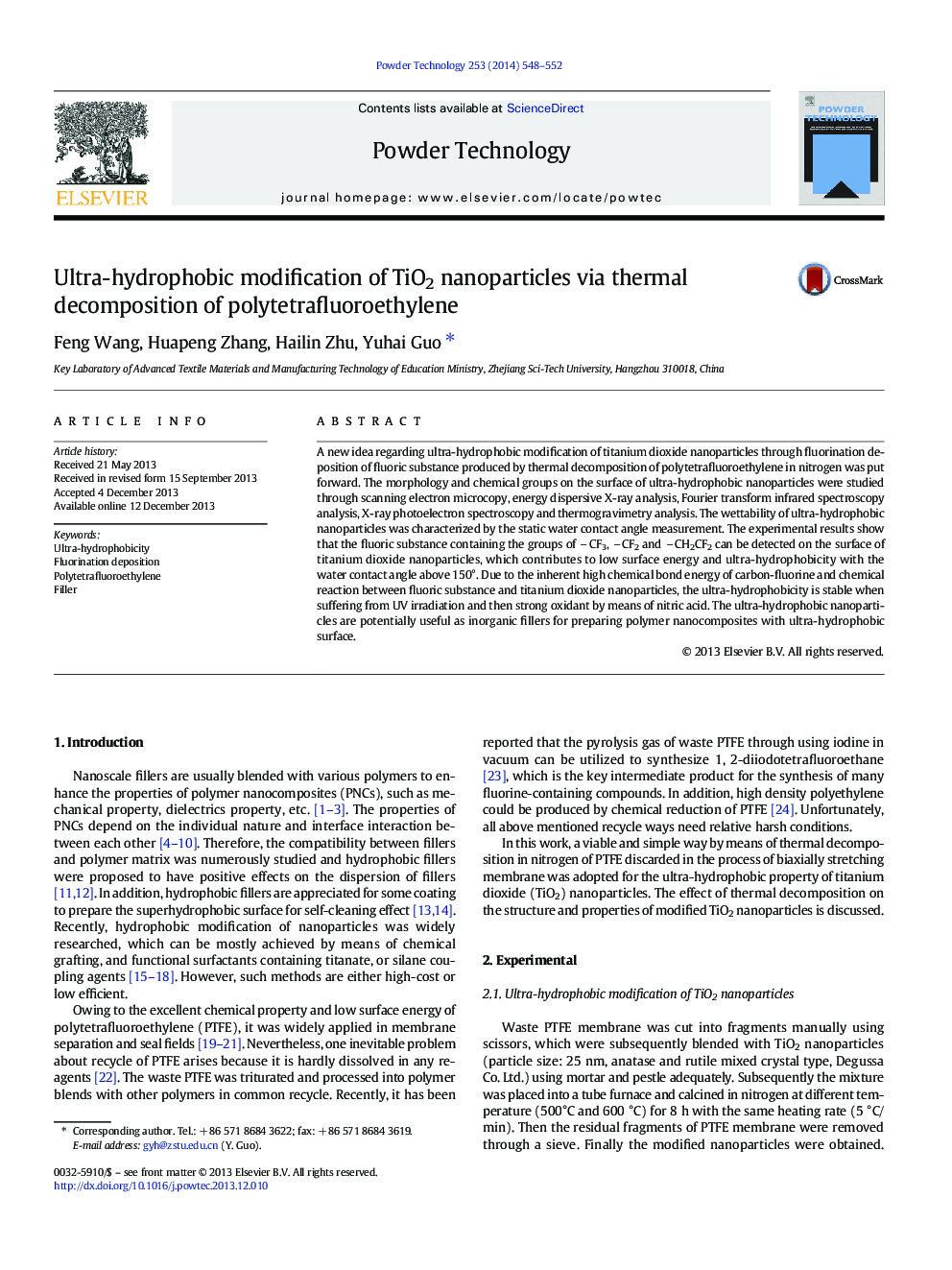| Article ID | Journal | Published Year | Pages | File Type |
|---|---|---|---|---|
| 236492 | Powder Technology | 2014 | 5 Pages |
•Ultra-hydrophobic nanoparticles were prepared via thermal decomposition of PTFE.•The fluoric layer contributes to the high WCA over 150°.•The ultra-hydrophobicity is steady when facing UV-irradiation and strong oxidant.
A new idea regarding ultra-hydrophobic modification of titanium dioxide nanoparticles through fluorination deposition of fluoric substance produced by thermal decomposition of polytetrafluoroethylene in nitrogen was put forward. The morphology and chemical groups on the surface of ultra-hydrophobic nanoparticles were studied through scanning electron microcopy, energy dispersive X-ray analysis, Fourier transform infrared spectroscopy analysis, X-ray photoelectron spectroscopy and thermogravimetry analysis. The wettability of ultra-hydrophobic nanoparticles was characterized by the static water contact angle measurement. The experimental results show that the fluoric substance containing the groups of CF3, CF2 and CH2CF2 can be detected on the surface of titanium dioxide nanoparticles, which contributes to low surface energy and ultra-hydrophobicity with the water contact angle above 150°. Due to the inherent high chemical bond energy of carbon-fluorine and chemical reaction between fluoric substance and titanium dioxide nanoparticles, the ultra-hydrophobicity is stable when suffering from UV irradiation and then strong oxidant by means of nitric acid. The ultra-hydrophobic nanoparticles are potentially useful as inorganic fillers for preparing polymer nanocomposites with ultra-hydrophobic surface.
Graphical abstractUltra-hydrophobic TiO2 nanoparticles were obtained via fluorination deposition of fluoric substances from thermal decomposition of polytetrafluoroethylene at 500 °C rather than 600 °C, which still showed ultra-hydrophobicity after suffering from UV irradiation and nitric acid.Figure optionsDownload full-size imageDownload as PowerPoint slide
